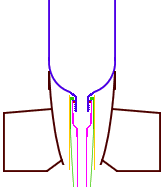Fins mounted on an aerodynamic skirt
So, the requirements are:
First of all, we need to make a tapered section from a bottle. This is the same method as is used in the 1½ litre 'Egglofter' rocket although it is not necessary to blow out the bottom of the bottle into the shape of a hemishpere. Fix the adapter (described on the connectors page)
onto the end of the bottle (a)
and put a little less pressure in it than you would to
blow out the end. Make sure that the bottle heats up
evenly in the area that you want to reduce by turning it
continuously above the flame in the same manner as a
glass As the bottle shrinks, you should let some of the air out so as to maintain the pressure (low enough to let the bottle shrink but high enough to stop it colapsing). If the bottle is not showing signs of shrinking but is warm enough then loosen the adapter slightly to let some of the air out. You may have to do this a number of times but always have the pump nearby incase you let out too much. Once you have got it just the way you want it (b), put it in cold water to make it set.
Cut along line a with a pair of scissors to that you end up with an edge that is smooth and straight that will slide over the nozzle end of a 2 litre bottle. Position a should be chosen such that it has a parallel sided portion long enough to allow fitting onto the bottle. Cut along line b
with a soldering iron or other hot point so that you end
up with a line that has a smooth, rounded edge that will
not cut you in the field. Position b should be chosen such
that it gives enough clearence to the launcher such that
the launcher can be set up properly - ie, it should not
leave such a small aperture that the sleeve on a cable
tie launcher cannot be slid into position. Once you have your truncated cone section, you can make and attach the fins as described above in the Fins made from the side of a pop bottle section - mounting the fins, using tape and a cable tie (or ties) to secure them in position. Again, put tape all around the edges of the fin so as
to increase visibility and also to make the edges less
likely to cause injury should the unfortunate happen. These can now be mounted onto the bottom of a 2 litre bottle and provide the more aerodynamic qualities that are required for higher and longer flights. Simply tape the fin extension onto the bottle, making
sure that it is mounted axially to the bottle, otherwise
a curved flight-path will be observed. This diagram shows how you should leave sufficient clearence at the bottom for the launcher sleave. This is pictured on the Copper Tube Launcher but the principle applies equally to other launchers. As there is an obvious problem regarding getting the water supply (usually a water bottle) to the mouth of the nozzle, filling should be done with a funnel. In addition, problems may be encountered when
inverting the rocket in order to mount it on the launcher
- water pours out as you try to get the bottle aligned.
To combat this, either: a piece of plastic (cut like
a circle with a handle - the circle fitting over the end
of the nozzle) can be held over the end and removed
when the bottle is in position; or, the launcher can be
modiied so that it can fill a bottle in position. Mounting fins on a removable, tapered skirt involves more work but, as it is ultimately recyclable, it is well worth the effort. |
|||||
|
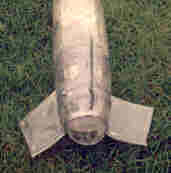 When
rockets land hard, or just too many times, their
reliability starts to become questionable - will it
explode the next time I pump it up? Often, adding fins is
the part of building a rocket that takes most of the time
so, anything that can reduce that must be of at least
some benefit. The CD ROM fins above, mounted on a skirt,
may be transferred from one rocket to another but a large
open skirt at the end of a rocket is not the most
aerodynamic design.
When
rockets land hard, or just too many times, their
reliability starts to become questionable - will it
explode the next time I pump it up? Often, adding fins is
the part of building a rocket that takes most of the time
so, anything that can reduce that must be of at least
some benefit. The CD ROM fins above, mounted on a skirt,
may be transferred from one rocket to another but a large
open skirt at the end of a rocket is not the most
aerodynamic design. 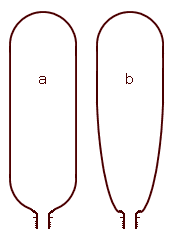 blower approximately 9"
above a gas ring (for those without gas rings, I have
seen a barbecue mentioned as an alternative although I
have not used one myself).
blower approximately 9"
above a gas ring (for those without gas rings, I have
seen a barbecue mentioned as an alternative although I
have not used one myself). 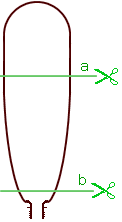 Now that you have
the shape that you need, you can cut it so size.
Now that you have
the shape that you need, you can cut it so size. 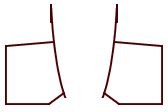
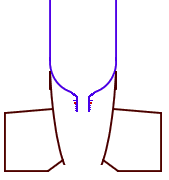 Once that is done,
you have your finished fins.
Once that is done,
you have your finished fins. 